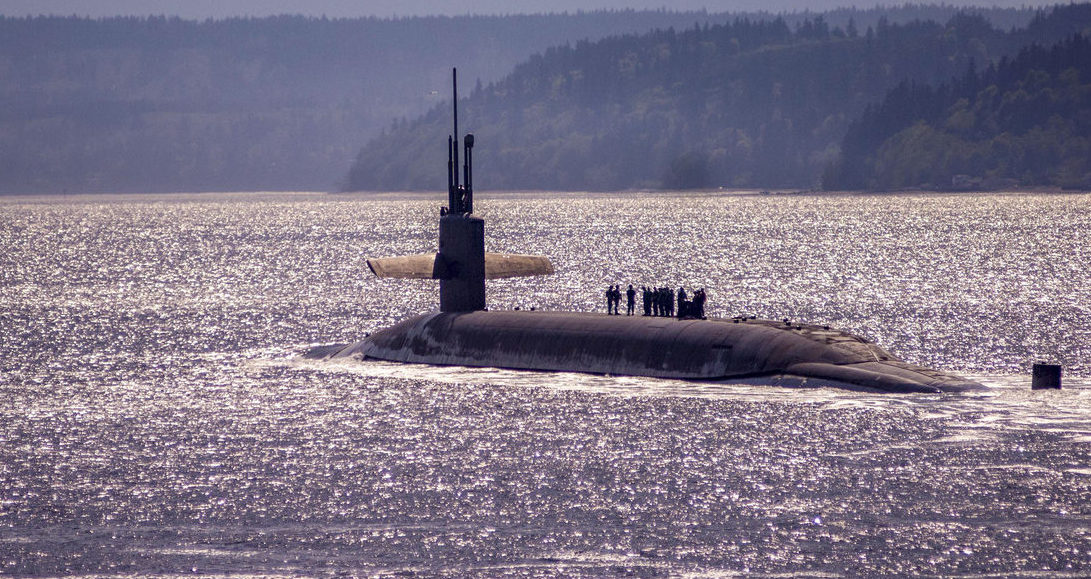
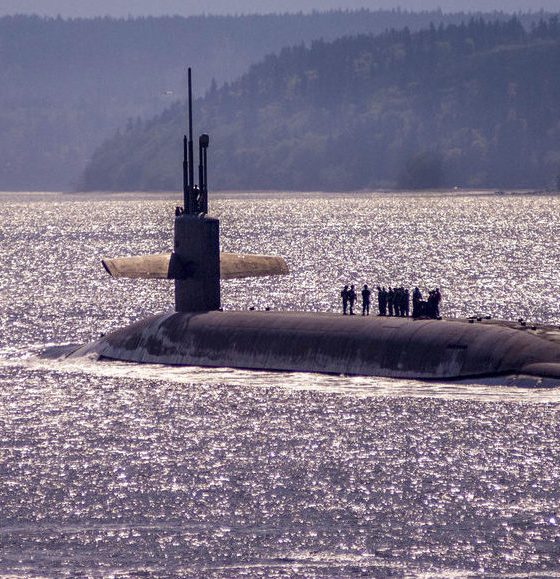
News
US military uses genetic engineering to develop “living tripwires” for submarines
The US Department of Defense (DoD) is investing $45 million dollars in a tri-service effort that focuses on synthetic biology (SynBio) for use in military technologies. This interdisciplinary scientific field primarily involves altering the genetic makeup of organisms to achieve specific behavior, and the military wants in on its potential applications. By uniting SynBio experts within the US Air Force, Army, and Navy, DoD officials hope to develop serious capabilities for use throughout the military’s branches.
The long form name of this project is the Applied Research for the Advancement of Science and Technology Priorities Program on Synthetic Biology for Military Environments, and the mission is obvious from its title alone. While still in the early research stages, engineering organisms could provide numerous tools with direct defense applications.
For example, organisms engineered to change their colors based on their environment could be used as living camouflage, and medications infused with protective microbes could help service member survival in tough conditions. However, it’s perhaps the US Naval Research Laboratory (NRL) in Washington DC that may hold the relevant interest in developing SynBio capabilities due to the marine environment potentials it holds.
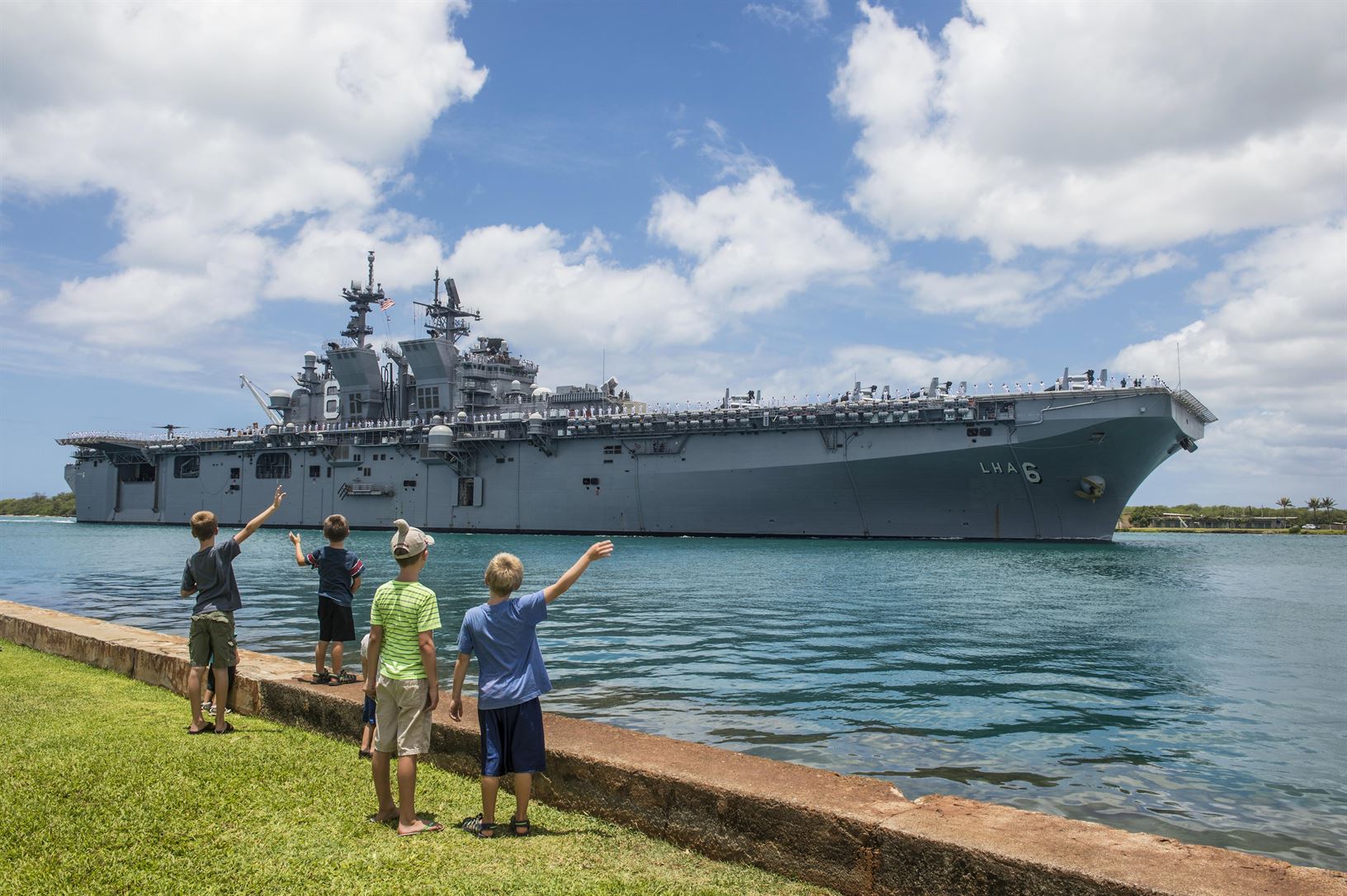
Above the water, engineered self-repairing organisms could spell out self-healing paint for ships and aircraft carriers, cutting billions from the US Navy’s fleet maintenance costs. Even more important for defense needs, though, are the modified organisms that could help the branch’s deep water operations, i.e., submarines. By modifying the environmental response of naturally present organisms, naval defense could have a new type of radar at their disposal.
An abundant seawater-native bacteria with “clinging” properties called Marinobacter is a prime candidate for the DoD’s purposes. Specifically, the organism could be genetically engineered to react to certain types of molecules that aren’t naturally occurring in the ocean, such as diesel fuel or human DNA, and then spread into targeted environments for monitoring. This reaction could perhaps be the release of an electron, thus creating an electrical signal which nearby drones could pick up and transmit where necessary. The ability to detect non-friendly submarines is the key capability the researchers are aiming to achieve, the bacteria acting as “living tripwires.”
The field of synthetic biology is not new in the civilian world. In fact, consumer products currently exist based on it, such as bio fuels, soaps, cleaners, food additives, and a variety of industrial and manufacturing products. One of the challenges of bringing this type of technology to the field for military use is making the modified organisms tough enough to endure the environments needed.
“If you want to move a biological bio-based sensor to the field you try to ruggedize those organisms. You try to protect them…[and]…increase their longevity in these harsh environments,” explained Dimitra Stratis-Cullum, the lead of U.S. Army Research Laboratory biomaterials team, in a recent forum hosted by the Johns Hopkins University Applied Physics Laboratory.
The current genetic research being conducted in SynBio has demonstrated that the genes of E. coli bacteria can be manipulated to express properties relevant to the larger goal of underwater sensing. However, the significant differences between the E. Coli and the types of organisms natural to deep water environments, such as Marinobacter, can be compared to the differences between mice and humans.
The initial point really is to either prove that the desired outcome is possible or collect data to assist in that effort. In other words, there’s still a lot of work to be done, but making the effort a priority, such as what the Navy’s done with its “Task Force Ocean” mission aimed at strengthening partnerships within academia and the private sector regarding Navy-relevant ocean science, is a focused step in the right direction for the military to achieve its goals in SynBio.

News
Tesla Cybertruck welcomed with open arms in South Korea
The event featured interactive demos, a light show with the full Tesla lineup, and announcements including FSD Supervised’s planned rollout to Cybertruck by the end of 2025.
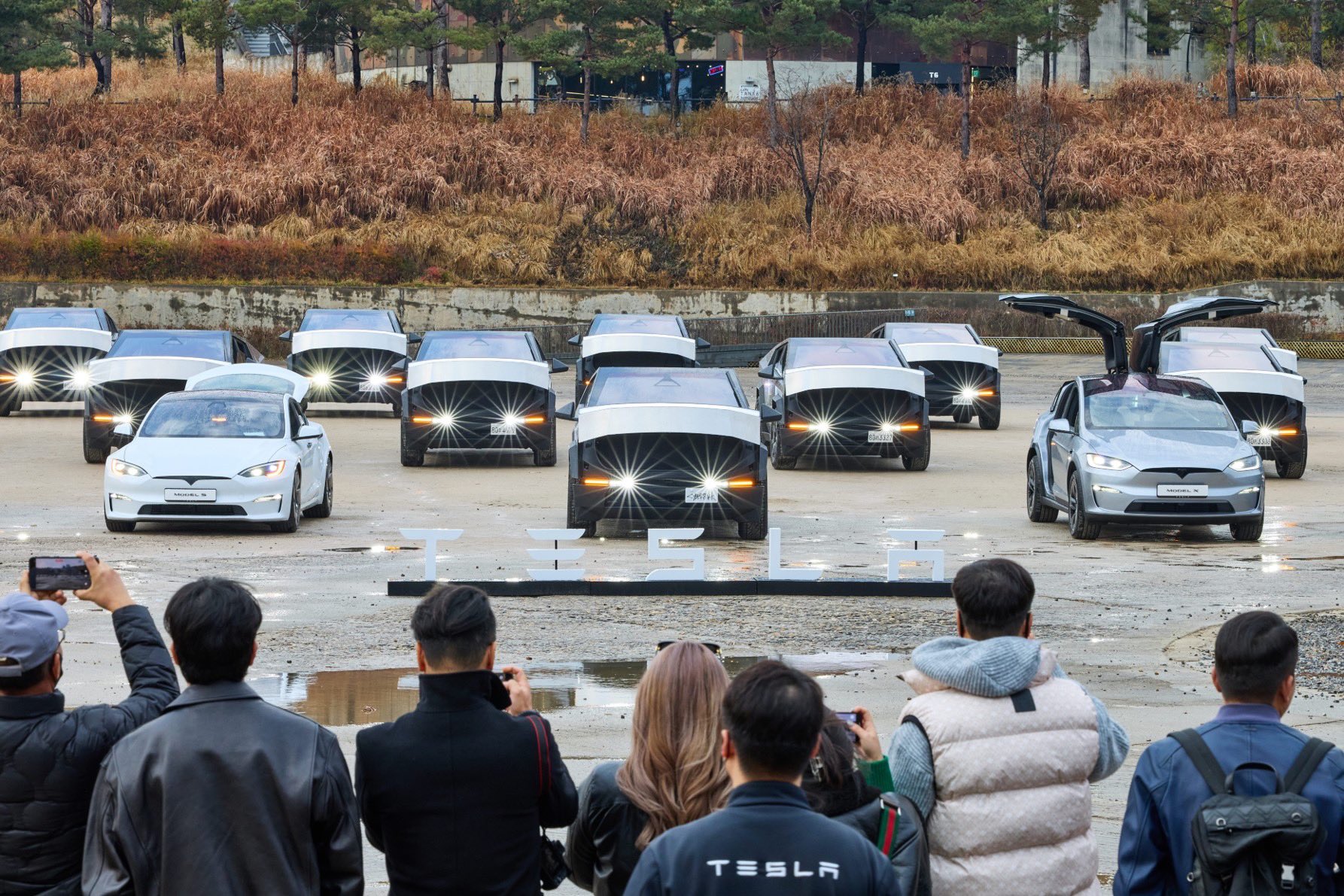
Tesla Korea handed over its first 30 Cybertrucks to owners on Thursday during a ceremonial event at the Cultural Reserve Base in Seoul, marking the all-electric pickup truck’s official debut outside North America.
The event featured interactive demos, a light show with the full Tesla lineup, and announcements including FSD Supervised’s planned rollout to Cybertruck by the end of 2025.
A historic delivery event
The November 27 event transformed a former oil reserve warehouse into a symbolic launchpad for electric mobility. Attended by 30 new owners, the event included hands-on activities such as hammer-strike durability tests, accessory sales, a lucky draw, and group photos. It culminated in a synchronized light show featuring the 30 Cybertrucks alongside Model S, Model 3, Model X, and Model Y vehicles, which drew cheers from attendees.
Yvonne Chan, Tesla APAC Regional Director, joined as a special guest to celebrate the delivery milestone. Tesla Korea President Seo Young-deuk was also in attendance, and shared his optimism for the company’s momentum in the country.
“Korea is currently the third-largest market for Tesla sales worldwide, and this year, for the first time, it has achieved the No. 1 spot in imported car brand sales volume, Tesla Korea is growing at an incredibly rapid pace,” he said. “To repay this love from our customers, Tesla plans to continue investing in the Korean market and enhancing the customer experience.”
FSD Supervised launches in Korea
Seo announced the official introduction of Full Self-Driving (Supervised) in Korea, with Cybertrucks slated for inclusion by the end of 2025, which promoted applause from the event’s attendees. With even the Cybertruck expected to receive FSD this year, Tesla Korea’s fleet could very well become the country’s most advanced vehicles overnight.
Infrastructure growth remains a priority to support Tesla Korea’s expanding fleet. Tesla Korea’s Supercharger network currently includes 166 sites with 1,133 stalls, with V4 units planned for nationwide highway rest areas to boost long-distance travel. The company also operates seven stores and 15 service centers, though plans are underway to double both by 2027. A new store in Incheon’s Songdo district is scheduled to open by December 2025, enhancing accessibility for western Seoul-area customers.
Seo concluded, “Through all-encompassing investments spanning products, charging infrastructure, and service networks, Tesla Korea will deliver the most refined electric vehicle experience to Korean customers.”
News
Tesla China delivery centers packed as Q4 2025 enters its final month
Fresh photos from delivery centers in the country show rows upon rows of Model Ys and Model 3s.

Tesla’s delivery centers in China are filled with vehicles as the company ramps up for its final push in Q4 2025. Fresh photos from delivery centers in the country show rows upon rows of Model Ys and Model 3s, signaling strong end-of-quarter momentum.
A delivery push for Q4 2025
A recent aerial shot from a Tesla delivery center in China captures the company’s efforts to deliver as many vehicles as possible as the year comes to a close. As could be seen in the image, which was posted by on X by Tesla enthusiast Nic Cruz Patane, the facility was filled with numerous Model Y and Model 3 units, each vehicle seemingly ready to be handed over to customers.
Echoing the scene, another post, reportedly from two weeks prior, showed a similar scene in a Shanghai location, which was packed with Model Y units. X user Roberto Nores shared the photo, noting that the image also shows multiple Model Y Ls, a six-seat extended wheelbase version of the popular all-electric crossover.
Towards a strong Q4 finish
China remains Tesla’s volume powerhouse, accounting for a good portion of the company’s global deliveries in recent quarters. That being said, reports did emerge in early November stating that the company only reached 26,006 retail sales during October, as noted in a CNEV Post report. The reasons for this remain to be seen, though a focus on exports could have been a contributing factor.
Tesla China does seem to be hinting at some momentum this November. Just recently, Tesla watchers observed that the order page for the Model Y in China shows a message informing customers that those who wish to guarantee delivery by the end of the year should purchase an inventory unit. This was despite the Model Y RWD and Model Y L showing an estimated delivery timeline of 4-8 weeks, and the Model Y Long Range RWD and Model Y Long Range AWD showing 4-13 weeks.
Elon Musk
SpaceX’s Starship FL launch site will witness scenes once reserved for sci-fi films
A Starship that launches from the Florida site could touch down on the same site years later.
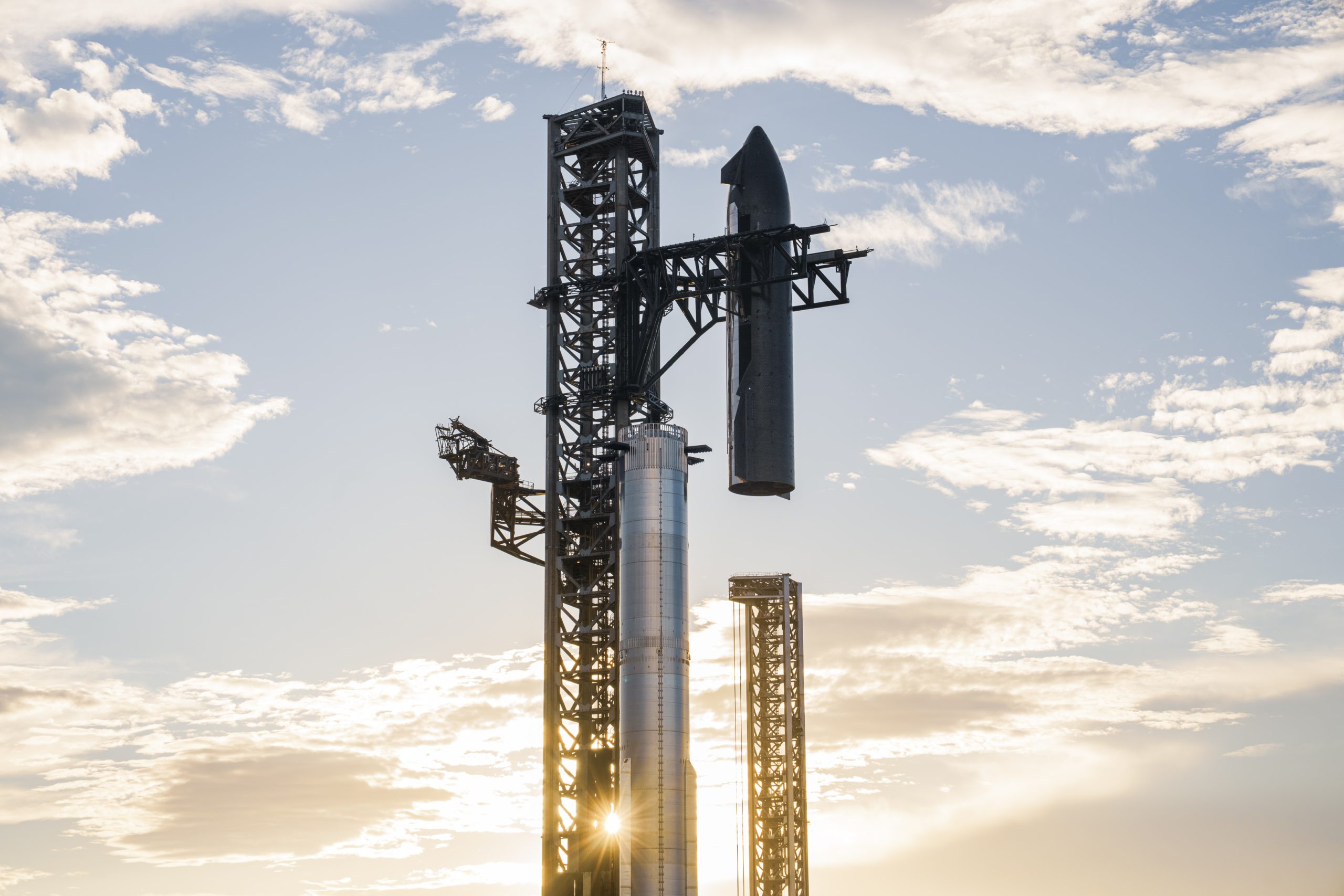
The Department of the Air Force (DAF) has released its Final Environmental Impact Statement for SpaceX’s efforts to launch and land Starship and its Super Heavy booster at Cape Canaveral Space Force Station’s SLC-37.
According to the Impact Statement, Starship could launch up to 76 times per year on the site, with Super Heavy boosters returning within minutes of liftoff and Starship upper stages landing back on the same pad in a timeframe that was once only possible in sci-fi movies.
Booster in Minutes, Ship in (possibly) years
The EIS explicitly referenced a never-before-seen operational concept: Super Heavy boosters will launch, reach orbit, and be caught by the tower chopsticks roughly seven minutes after liftoff. Meanwhile, the Starship upper stage will complete its mission, whether a short orbital test, lunar landing, or a multi-year Mars cargo run, and return to the exact same SLC-37 pad upon mission completion.
“The Super Heavy booster landings would occur within a few minutes of launch, while the Starship landings would occur upon completion of the Starship missions, which could last hours or years,” the EIS read.
This means a Starship that departs the Florida site in, say, 2027, could touch down on the same site in 2030 or later, right beside a brand-new stack preparing for its own journey, as noted in a Talk Of Titusville report. The 214-page document treats these multi-year round trips as standard procedure, effectively turning the location into one of the world’s first true interplanetary spaceports.
Noise and emissions flagged but deemed manageable
While the project received a clean bill of health overall, the EIS identified two areas requiring ongoing mitigation. Sonic booms from Super Heavy booster and Starship returns will cause significant community annoyance” particularly during nighttime operations, though structural damage is not expected. Nitrogen oxide emissions during launches will also exceed federal de minimis thresholds, prompting an adaptive management plan with real-time monitoring.
Other impacts, such as traffic, wildlife (including southeastern beach mouse and Florida scrub-jay), wetlands, and historic sites, were deemed manageable under existing permits and mitigation strategies. The Air Force is expected to issue its Record of Decision within weeks, followed by FAA concurrence, setting the stage for rapid redevelopment of the former site into a dual-tower Starship complex.
SpaceX Starship Environmental Impact Statement by Simon Alvarez









